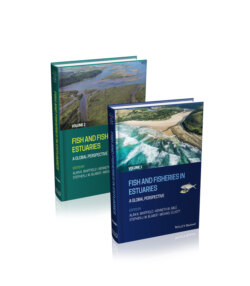Читать книгу Fish and Fisheries in Estuaries - Группа авторов - Страница 70
3.4.2.1 Recruitment levels and variability
ОглавлениеInter‐annual variability in recruitment of estuary‐dependent and ‐associated fishes is often cued to weather and climate patterns that differ inter‐annually or amongst climate regimes (Wood & Austin 2009). Recruitments sometimes are autocorrelated, reflecting successive years of similar weather patterns that contribute to either low or high reproductive and recruitment success, or to time periods of alternating high and low recruitment (Fogarty 1993), often labelled as regime shifts. Decadal trends in recruitments of estuary‐dependent and ‐associated fishes are sometimes concordant with climate shifts and decadal (or longer) climate regimes (Wood 2000, Hare & Able 2007, Wood & Austin 2009, Hare et al. 2010, Nye et al. 2014). Long‐term shifts in patterns in recruitment and reproductive success, particularly declines, may be attributed to deterioration of estuarine habitat and water quality resulting from human activities (Houde et al. 2014).
Variable patterns in levels of reproductive success have been documented for anadromous fishes that spawn in estuaries on the east coast of North America and for marine and estuary‐dependent fishes that spawn offshore in the western North Atlantic (Hare et al. 2010, Nye et al. 2014). In Chesapeake Bay, recruitment of anadromous species that enter the bay to spawn is relatively successful in years that are cool, experience high precipitation and above‐average freshwater discharge during the spawning and nursery seasons. In contrast, offshore spawners, whose young use Chesapeake Bay as a nursery, experience successful recruitments in years when regional weather is warm and dry (Wood 2000, Kimmel et al. 2009, Wood & Austin 2009). There are exceptions, however, for example, glass eels of the catadromous Anguilla rostrata experience greater ingress success to estuaries on the US east coast in years with high precipitation (Sullivan et al. 2006). High precipitation and associated river flows also are associated with higher recruitments of A. anguilla glass eels to European estuaries, although the highest flows may counteract the efficiency of selective tidal stream transport (STST) in facilitating up‐estuary migrations (Harrison et al. 2014).
In the Baltic Sea, spawning stock biomasses of clupeids (Clupea harengus and Sprattus sprattus) and the gadid Gadus morhua are only weakly correlated with recruitments (ICES 2018). It is hypothesised that the observed variability in recruitment is largely due to variability in high mortality rates during early life (Ojaveer 1988). Recruitment of the Gulf of Riga stock of C. harengus is influenced by a suite of factors, including spawning stock biomass, the winter Baltic Sea Index prior to spawning (Lehmann et al. 2002) and sea surface temperature during winter after fall spawning (Ojaveer 1988). Recruitment level of the Gulf of Riga spring‐spawning C. harengus has varied more than tenfold in the 1957–2011 period (Arula et al. 2014). In contrast, recruitment variability in the spring‐spawning, Central Baltic stock of C. harengus is related to summer (August) sea surface temperature and its apparent effect on survival of larvae and juveniles. Recruitment level of Sprattus sprattus is positively related to summer (July–August) temperature and to spawning stock biomass when SSB is <200 000 tonnes (Margonski et al. 2010, ICES 2018). Recruitment of the Eastern Baltic gadid G. morhua is significantly related to spawning stock biomass, the winter North Atlantic Oscillation index and the varying reproductive volume of the Gotland Basin (ICES 2018). Assessment models for Baltic fishes that include extrinsic factors, in addition to spawning stock biomass, significantly improve recruitment predictions (Margonski et al. 2010).
In the temperate Chesapeake Bay, recruitment of the abundant, unfished engraulid Anchoa mitchilli occurs at <4 months posthatch and varies at least ninefold amongst years (Jung & Houde 2004a) while young‐of‐the‐year, juvenile abundance of the moronid Morone saxatilis (Figure 3.15) varies >30‐fold (Martino & Houde 2012). In the case of M. saxatilis, whose lifespan may exceed 35 years, recruitment to the fishery does not occur until age 3 and, upon entry to the fishery, recruited year classes on the east coast of North America vary only threefold (NEFSC 2019). On the west coast of North America, where introduced M. saxatilis is established in the San Francisco Bay Estuary, its year classes vary >25‐fold as age‐0+ juveniles but abundances are less variable (approximately threefold) at age of recruitment to the fishery (Kimmerer et al. 2000, 2001). The reduction in variability in cohort abundances from age‐0+ to age‐3 is attributed to density‐dependent regulation during the juvenile stage.
